4ms Quad Clock Distributor Handleiding
4ms
Niet gecategoriseerd
Quad Clock Distributor
Bekijk gratis de handleiding van 4ms Quad Clock Distributor (8 pagina’s), behorend tot de categorie Niet gecategoriseerd. Deze gids werd als nuttig beoordeeld door 91 mensen en kreeg gemiddeld 4.3 sterren uit 46 reviews. Heb je een vraag over 4ms Quad Clock Distributor of wil je andere gebruikers van dit product iets vragen? Stel een vraag
Pagina 1/8

Quad Clock Distributor (QCD)
from 4ms Company
Eurorack Module User Manual v2.0 (2015-02-20)
The Quad Clock Distributor (QCD) from 4ms Company is a four channel Voltage Controlled Clock Divider/Multiplier
with master Tap Tempo. Each channel can be synced to the tap tempo, to the channel above, or to an external
clock. Each channel also has a reset jack.
With a Tap Tempo button and five sync'ed clock outputs, the QCD is a versatile head-of-the-chain "Master" clock
module, and/or a complex rhythmic pattern generator.
The QCD has headers for connecting to the QPLFO, VCA Matrix, and other modules.
•Four CV Clock Divider/Multipliers (/32 to x16)
•Tap Tempo button with dedicated tap clock output
•Channels sync to tap tempo, or can be driven by external clock(s)
•Reset jack on each channel
•Gate or trigger outputs, or variable PW and Trigger Delay using the QCD Expander
•Create complex trigger patterns for drum modules or rhythmic patches
•Connects to QPLFO and other modules with the included 8-pin cable
•QCD Expander adds attenuator/inverters for CV inputs
DOWNLOAD MOST RECENT MANUAL AT:
http://4mspedals.com/qcd.php

Basic features:
•Four CV-controlled Clock Divider/Multipliers
◦CV control allows for clock speed to be sequenced, manually changed, and/or self-patched for complex and
controllable patterns
◦Divides and Multiplies clocks from /32 to x16 on each channel
▪Detented knobs snap to integer division/multiples
▪CV jacks modulate Div/Mult amount
▪Channels can be stacked for more range (/1048576 to x65536)
•Tap clock output jack runs at the tapped tempo even if other channels are being clocked externally
•Independent CLOCK IN, OUT, Reset and Div/Mult CV on each channel
•Reset jack restarts the clock when a trigger is received (alters phase of clock)
•Clock input jacks are normalized downwards: Tap->Red->Black->Blue->Green
◦Plugging into a CLK IN jack will clock the channel(s) below with the same clock
•Auto-stop: each channel stops automatically when the incoming clock stops
•LED brightness can be adjusted from the front panel
•Jumper selectable gate or trigger outputs (QCD Expander adds CV control)
•High-quality potentiometers with metal shafts and nuts
Connectivity:
•Daisy chain multiple QCDs or other clock modules using Tap Out jack
•Interfaces with QCD Expander for more features (Pulse Width, Inverted Gate, attenuverters for CV inputs)
•8-pin header on the PCB connects to the Quad Pingable LFO (QPLFO) to provide four LFOs with CV control of Skew,
and CV control of the clock divide/multiply amount.
•The 8-pin header can also interface with other modules (VCA Matrix, Mixiplexer, Intermix)
•Can create a standard clock from a DINSYNC 24ppq clock and vice-versa, using two channels (/12 and /2, or p2-x6 and
x4, for example).
Controls and jacks:
•Tap tempo button tap twice to set a tempo. If no external clocks are plugged in, it clocks all the channels
•TAP OUT jack: Clock output for the tapped tempo.
•Each of the 4 channels has:
•CLK IN jack: Clock input. Any signal can be used. A trim pot on the back sets the triggering threshold (default
is 2.5V). If nothing is plugged in, the clock is taken from the CLK IN jack on the channel above. The top
channel's CLK IN jack is normalized to the Tap clock.
•OUT jack: Clock output. Period (tempo) is a division or multiple of the time between the last two pulses on the
CLK IN jack
•Reset jack: Trigger input locks the clock phase to a new spot in the "measure". Any signal can be used. The
same triggering threshold for the CLK IN jack is used.
•Div/Mult: Knob selects amount of clock division or multiplication from /32 to x16, detenting/clicking at integer
amounts.
Note: /32 and x16 have two "clicks" each. Turning the knob all the way down is /32, and turning it up one click
is also /32. The next click is /16. Similarly, the top two clicks are x16. The artwork on the faceplate shows this.
•Div/Mult jack: 0V to 10V sweeps full range. Knob provides offset to the signal on the jack.
•LED: blinks to the tempo. Brightness is adjustable.
•LED Brightness: the small hole next to the TAP OUT jack is for adjusting the LED Brightness. A tiny phillips
screwdriver can be inserted through the panel to adjust the brightness. See manual section for instructions.
Dimensions
•10 HP Eurorack format module
•1.06” (27mm) deep
Power consumption
+12V rail:
53mA max with 5V Source jumper selecting external 5V
65mA max with 5V Source jumper selecting internal 5V
+5V rail:
13mA max with 5V Source jumper selecting external 5V
not used with 5V Source jumper selecting internal 5V
-12V rail:
40mA max
Page 2

Getting started
First, install the QCD in your Eurorack modular system. Use the included power cable to plug into the 16-pin header on a
standard Eurorack/Doepfer standard power supply. The red stripe should point down, and is -12V. Screw the QCD to the rails
on your case using the included M3 screws (or supply your own screws).
1. Start by tapping in a tempo. Press the Tap button twice.
Instantly, the button will flash to your tempo
All the channels are now synced to the tempo you tapped. If you tap a new tempo, all the lights will follow your
new rhythm. You can clear the tempo by holding down the Tap button for 1 second.
2. Plug the TAP OUT jack into something that makes sound.Try a bass drum module, or you could Ping
or trigger a PEG channel and run the ENV output into a VCA with a cool sound running through it.... This
will be your "metronome".
3. Plug the red OUT jack into something else that makes or changes sound. Maybe a hi-hat module, or
trigger a different envelope, or FM/waveshape a VCO.
4. Turn the red Div/Mult knob and listen to the different divisions and multiples of the clock.
For instance p3-x3 will be triplets (or x12 will be triplets if you consider the tap clock to be quarter notes), and /4
will hit every 4th beat. Try to get familiar with the difference between p3-x7 and x6, for example.
5. Plug external CV into the red Div/Mult CV jack.
Try the ENV out from a PEG running very slowly (turn the PEG Scale knob to about
2 o'clock).
Tip: Ping the PEG with the black OUT, and set black Div/Mult to /32 or /16.
Try a manual pad, such as the Pressure Points or a Synthwerks FSR module
(pressure output, not gate outputs).
Try a sequencer output. Each step in the sequencer can set a different
Divide/Multiply amount.
Tip: Clock the sequencer with the Tap Out or one of the QCD channels. Now will be synced. This is an easy way everything
to experiment with sequencing dance beats: changing rhythms rhythmically.
5. Turn the blue Div/Mult knob to "=" and plug the blue OUT into something
that makes sound.
Now we have 3 sounds going: a metronome (Tap Out), the red channel, and the
blue channel (which should be matching the metronome).
6. Trigger the blue Reset on the up-beat.
Run a manual trigger into blue Reset and fire it a fraction of a beat after you hear
the metronome. Listen to how the blue sound is still at the same tempo as the
metronome, but on an off-beat. Hit the trigger some more, and listen to how it
changes. This is called changing the of a clock. Play with Div/Mult, too.phase
Tip: To clear the reset, turn the knob up to x16 and back, or send a trigger into the
Div/Mult jack, or just stop and restart the clock (hold the Tap button for 1 second).
If you don't have a manual trigger like a Pressure Points or Synthwerks FSR, use a manual CV knob (MATHS Ch 2, or a
stopped PEG channel in Bi-polar mode) and turn the knob down/up/down to generate a trigger. Or do the "poor man's button":
plug/unplug a cable into any jack that's holding a high gate.
7. Make a shuffle beat by resetting the blue channel with the green
channel. This patch only works if the jumpers are set to Trigger Mode or you
have a QCD Expander with Pulse Width set to triggers. See the "Gate Mode
and Trigger Mode" section later in the manual.
Set blue Div/Mult to x5. Set green Div/Mult to x2. Patch green OUT into blue
Reset. The blue channel will output a swing pattern. Try green Div/Mult at x3,
then try x4. Try blue Div/Mult at x7.
•The green channel must be going slower than the blue channel (or else
you won't get a shuffle pattern)
•For best results, the two Div/Mult values should not be multiples of each
other (e.g. p3-x3 and x5, not p3-x2 and x4).
•Keep in mind that the slower channel must be resetting the faster
channel in order to generate a shuffle pattern (x3 -> x5, not p3-x5 -> x3)
Tip: Try modulating the green Div/Mult a small amount with an LFO.... And/or
fire manual resets into the green channel...
Page 3
Product specificaties
| Merk: | 4ms |
| Categorie: | Niet gecategoriseerd |
| Model: | Quad Clock Distributor |
Heb je hulp nodig?
Als je hulp nodig hebt met 4ms Quad Clock Distributor stel dan hieronder een vraag en andere gebruikers zullen je antwoorden
Handleiding Niet gecategoriseerd 4ms
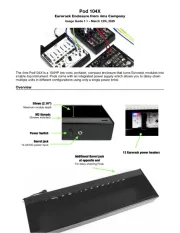
2 Augustus 2025

4 Mei 2024

3 Augustus 2023

3 Augustus 2023

24 Juni 2023

16 Juni 2023

16 Juni 2023

2 Juni 2023

19 Mei 2023

15 Mei 2023
Handleiding Niet gecategoriseerd
- Amgrow
- Nutrichef
- Dorman
- Vipack
- SEB
- Azden
- RAB
- Respironics
- EQ Acoustics
- Bluebird
- Broan
- Ruggard
- YoloLiv
- Welcare
- Blackhawk
Nieuwste handleidingen voor Niet gecategoriseerd
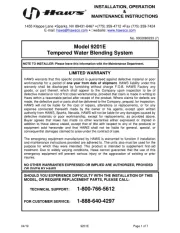
16 September 2025
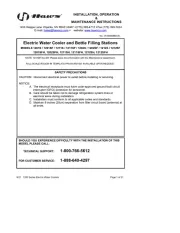
16 September 2025
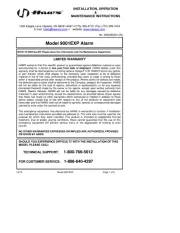
16 September 2025

16 September 2025
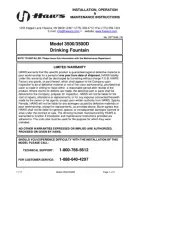
16 September 2025
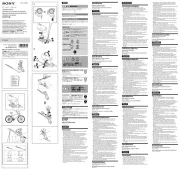
16 September 2025
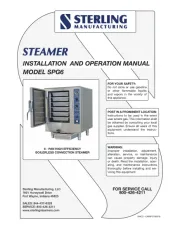
16 September 2025
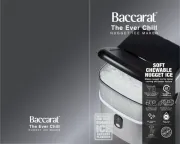
16 September 2025
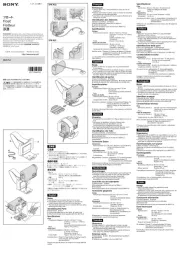
16 September 2025
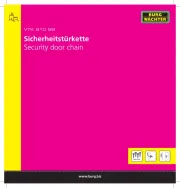
16 September 2025